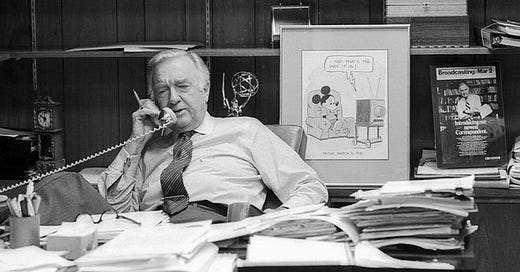I’ve worked in journalism for a long time, which basically just means I’m old, though it’s a nicer way of saying so. But if you knock around long enough, you’ll pick up some good stories — and there is no better place to find them than working at a newspaper or website or TV or radio station. It’s a Walter Mitty life, except cool stuff actually happens, not just in your head.
Not all of it is cool, of course. Like anyone who has been around long enough I’ve been threatened and yelled at and called names and whatnot, most of that just today. That’s just part of the job. You want to make some kind of impact. Hate mail just means they’re reading.
Every now and then something will spur a memory, and I realize at some point I need to write this stuff down, so it’s not forgotten forever. I remember the big stuff — going to Super Bowls, scalping tickets to the Final Four because I didn’t apply for media credentials early enough, flying in an F-16 with the Thunderbirds, hanging out with Brad Pitt in a Toronto hotel room, talking to Steven Spielberg (twice) and Martin Scorsese and whoever else. That’s easy.
Besides, a lot of people have stories like that. The weirder ones are what happened at a crime scene or a county commissioners meeting or just hanging around the newsroom. I need to document all of this stuff, if only as a mental exercise.
Thus begins yet another intermittent series of posts, this one beginning with the time The Arizona Republic sent me to New York to interview Walter Cronkite. It was in 2005, and I honestly don’t remember why. Newspapers had more money then. And I taught at the Walter Cronkite School of Journalism and Mass Communication at Arizona State University; maybe that had something to do with it. Maybe not.
I do remember showing up at his big office at Black Rock in Manhattan. I sat in the room outside, waiting for his arrival. He had two secretaries, who chatted amiably with me. Finally Cronkite came shuffling in (more on that soon), said hi to me and asked if it would be OK if he spoke to his secretaries privately in his office for a minute. Um, yes, of course.
Moments later they came out, sobbing. It turned out this was the first time he had been back to the office since his wife, Mary, died. I didn’t know what to say. I offered to come back later, but they said no, go on in. So I did.
Cronkite met me at the door and walked with me past the couch and sitting-room chairs to his desk. He said I know I’m shuffling, but it’s not because I’m old. It’s because I tore my Achilles tendon playing tennis. SINGLES, he said, not doubles. That was important to him.
As we walked along, he said, “I hear you teach at that school out there they named after me.” I said yes sir, I do. He asked what class. A course called Media Problems, I said.
He smacked me on the back and said, “My god, can one man handle it?”
Truly, that’s about as good as it gets.
We talked for a while. I was intimidated, of course, even though he could not have been nicer and more humble and more of a regular guy. Except, you know, he was WALTER FREAKING CRONKITE. I remember him saying he was surprised Dan Rather showed up at his wife’s funeral. That was kind of odd. “He didn’t have to do that,” he said. I knew there was tension there, but still.
I also remember him saying — this was 2005, remember, so in comparison to what’s going on today this was rather quaint — that a free press was crucial to a functional democracy. This wasn’t just boilerplate stuff to him. You could tell how passionate he was about it.
I wonder sometimes what he’d think about the world today. I’d really love to know. I think it could help.



